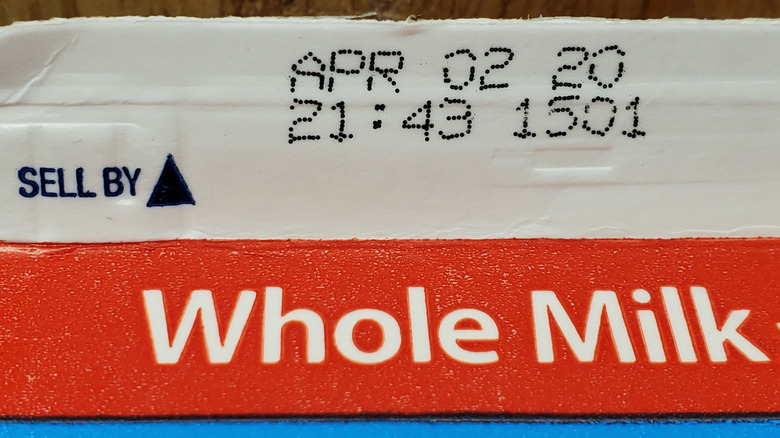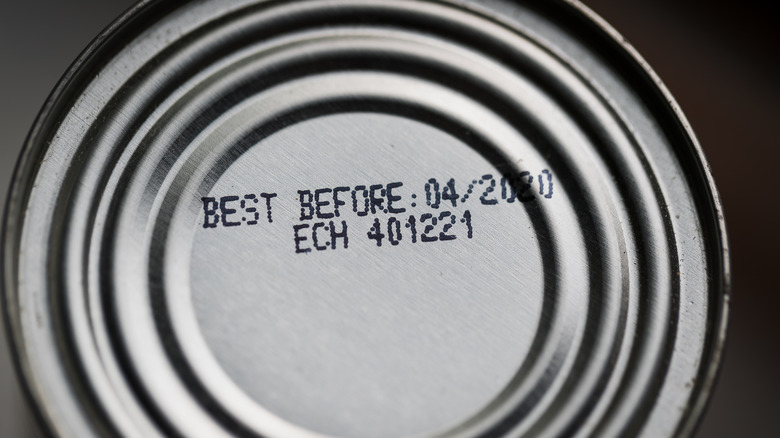What Open And Closed Dating Mean On Food Labels
Contrary to what most people think, expiration or best-by labels on food products are not required by Federal law (with the exception of baby formula) per the USDA Food Safety and Inspection Service. Those dates you come across on food packaging are not pinpoint accurate and not necessarily indicative of the product's safety — they are merely a suggestion of when to consume the item. It's not even particularly scientific, more of an educated guess.
While finding and deciphering those tiny stamps of numbers on a food package may seem like a pain and sometimes require a magnifying glass, it's an important and much-needed marking that we should be thankful manufacturers choose to include. Knowing the date and what it means helps us decide when to eat, freeze, or toss a food product. There are two types of dating labels on food items — open and closed. What's the difference and what do you need to know about each?
Open dating indicates peak quality
Per the USDA Food Safety and Inspection Service, open dating is designated by the manufacturer of the product or the retailer. It is a calendar date that lets the consumer know when the product will be at its best in terms of quality, often colloquially referred to as an expiration date. It also lets the store know how long the product should be for sale on the shelves.
Open dating is simply letting everyone know the product's peak quality date. The date listed indicates when it's at its top quality for consuming or freezing. Open dating is found on packaging for the majority of fresh food products including eggs, meat, dairy, and poultry.
While not required by law, open dating is regulated by the USDA if a manufacturer chooses to use it. The label must note the month and day, but the year is only required for shelf-stable or frozen foods. There must also be an explanation such as "Best if used by/before" or "Use-by" next to the listed date.
Closed dating is the production date
Closed dating is a set of numbers and/or letters stamped by the manufacturer that pinpoints the date and time the product was produced. In other words, closed dating is the product's birthdate. It won't tell you when a product goes bad, but it will tell you when it was made and/or packaged. Closed dating labels are typically found on boxed or canned items with a long shelf life because a best-by date is often indeterminable with these products. As long as the packaging remains properly sealed and it's stored properly, goods with closed dating can last for varying amounts of time. (Keep in mind that the food itself can slowly break down the can it's stored in.)
Bottom line? Any kind of date on a food label is not a magic window to know when it goes bad. It's just informational. Open dating tells you when to use or freeze the food or is used for inventory management purposes. Closed dating is a transparent reveal of exactly when the product was made so you can decide when you'd like to consume it. Use either label as a guide, but trust your gut (and nose and tongue) for safety. The nose knows, per Food Safety News.


